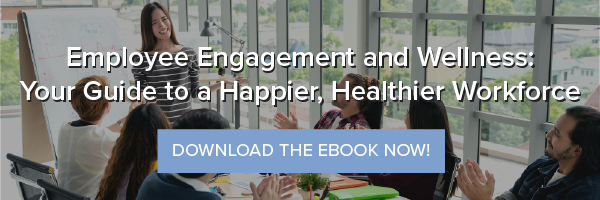
The war for talent hasn’t stopped just because of the pandemic. If anything, the competition for top employees has intensified in 2020. With so many companies embracing remote work, many employees are no longer restricted by geography when it comes to their employment options. Another effect of the rise in remote work? It’s become even more difficult for companies to keep high-performing workers from considering employment elsewhere.
If there was ever a time to focus on employee retention, it’s now. And companies can’t rely on perks like in-house baristas or meditation rooms. Instead, they need to look at the bigger picture: The employee experience—the sum of your employees’ positive and negative feelings about working for your organization—matters more now than ever.
Another way to talk about the employee experience is engagement. Engagement is an important measure of how committed people are to their jobs. Engagement doesn’t just mean liking your job; it means feeling connected to your colleagues, supported by your employer, satisfied with your work-life balance and career trajectory, and unified towards a common mission.
The more engaged employees are, the more likely they are to stay in their positions. A company culture that focuses on engagement also tends to attract top talent.
Three Ways to Improve the Employee Experience
Here are three things you can do to improve your employee experience and boost employee engagement with a remote workforce:
1. Create an Employee Recognition Program
You value your employees, but do they know that? The numbers are clear that what employees want more than almost anything else is recognition. And the numbers also tell us that most employees don’t get the recognition they deserve.
- Three out of four employees who are recognized at least once a month say they are satisfied with their jobs.
- Organizations that rate their culture of recognition highly are three times more likely to see increased employee retention.
- 82% of workers say they wish they received more recognition.
Everyone is going above and beyond right now to adapt to new ways of working and to persist and perform despite the many disruptions caused by the pandemic. An employee recognition program will help your people feel like all their hard work is appreciated, and it will inspire them to keep going.
Points-based recognition systems—which allow employees to redeem their rewards for physical or digital merchandise or experiences—are a fun way to make your appreciation tangible and personal. For more information, learn about WellRight’s recently-launched integration with Achievers, an award-winning employee recognition and rewards solution.
2. Invest in Learning and Development Programs
According to a LinkedIn report, 59% of employees have joined new companies for better career paths or more opportunities; and 45% of employees who left their organizations cited lack of advancement opportunities as a concern.
45% of employees who left their organizations cited lack of advancement opportunities as a concern.
Most people aren’t interested in staying in the same position forever. Your employees, naturally, want to move their careers forward toward more challenging projects and opportunities to become decision-makers. If your company fails to be a source of career advancement, your employees will eventually become restless and look for new work.
You can help your employees achieve their career goals by providing learning and development programs. Learning and development programs are meant to help your employees gain the skills, experience, and knowledge they need to fulfill their dreams (as opposed to training, which focuses on preparing employees to do something related to their current duties). That means the programs should be flexible and give your employees plenty of options.
Learning and development works well with remote work. Classes can be delivered via on-demand videos your employees can view whenever they have free moments.
For example, WellRight’s Learning Labs follow a microlearning model that lets employees set their own pace. Each of the four- to 10-week programs begins with a short educational video presented by an expert. Over the course of each week, participants practice their new skills and track their progress using online tools.
Make sure your employees have regular conversations with their supervisors about their career goals as well. It’s unfair to urge staffers to invest in learning and development but then refuse to let them move into new positions or other departments. Savvy companies are happy to invest in their people from the ground up, supporting them as they grow into new responsibilities and roles.
3. Hold a Company-Wide Wellness Challenge
Few activities bring employees together better than a shared challenge. Wellness challenges unite employees in working toward a common goal, such as walking a certain number of steps, exercising for a certain number of days, or undertaking something unique to your employee population (such as the Minnesota manufacturing company that holds an annual hunting-oriented “Buck Fever” challenge).
Wellness challenges have the added benefit of promoting employee well-being, a crucial driver of engagement among employees of all ages.
Wellness challenges may seem more difficult to pull off with a remote workforce, but thanks to technology, they can be manageable and fun. The right corporate wellness platform can make it easy for employees to set goals, track their progress, and announce their achievements. Fitness trackers, such as wearable devices and mobile apps, allow employees to exercise anytime, anywhere, and have it count toward the overall group goal.
Are you interested in designing an enjoyable, rewarding, and flexible wellness challenge for your remote employees? Contact the wellness specialists at WellRight today.




-min.jpg)